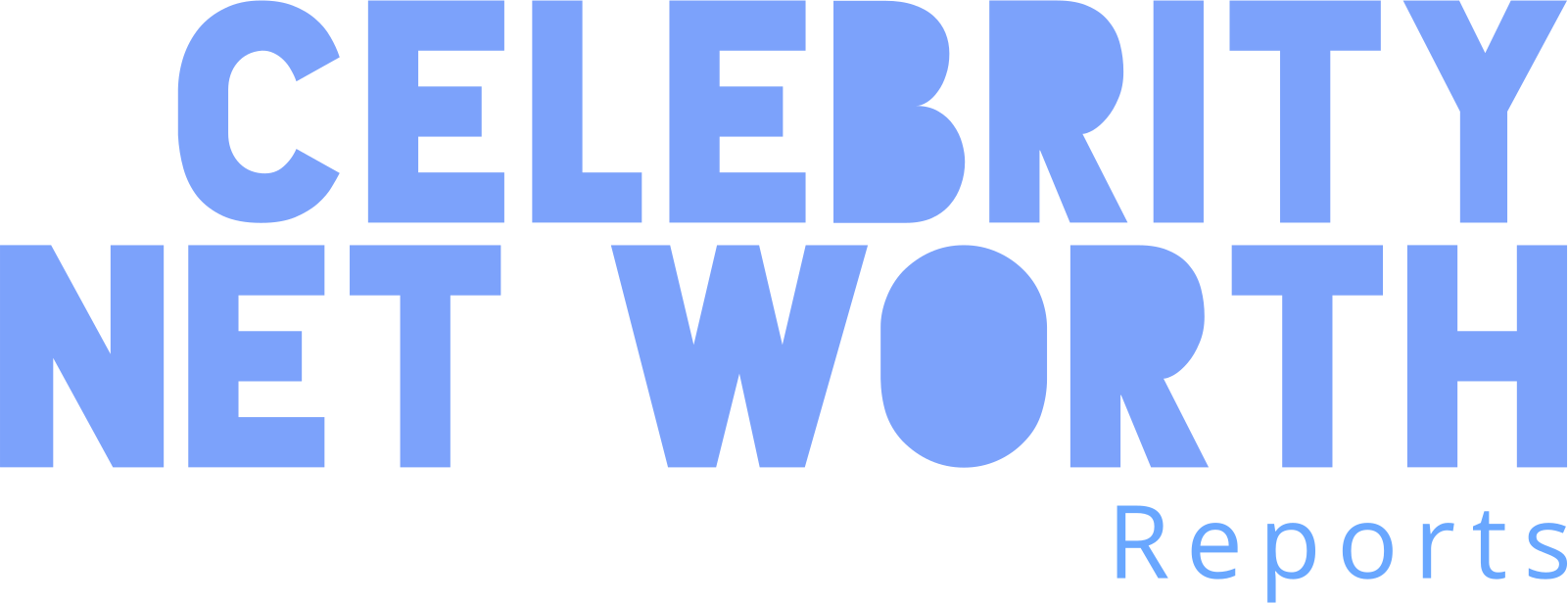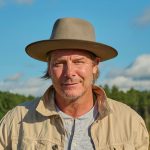Thomas Brag: Adventure Entrepreneur and Architect of Discomfort
Thomas Brag has established himself as one of the most distinctive voices in digital media through his role as co-founder of Yes Theory, a content collective and lifestyle movement that has redefined adventure content by emphasizing human connection, vulnerability, and personal growth. At 31, he has helped transform what began as experimental YouTube videos into a multifaceted media enterprise and global community united around the philosophy of “seeking discomfort” as a pathway to authentic living and meaningful experience.
Early Life and Cultural Foundations
Born in Paris, France in the early 1990s, Brag grew up in an environment that provided both stability and multicultural perspective. His childhood in France gave him the European cultural foundation and multilingual capabilities that would later prove valuable in creating content with global appeal and navigating international adventures with cultural sensitivity.
From an early age, Brag displayed the creative inclinations and entrepreneurial spirit that would later define his professional path. Childhood friends recall his natural leadership qualities and ability to organize others around creative projects—traits that foreshadowed his future role in building collaborative media ventures.
“Thomas was always the friend with big ideas who could somehow convince everyone to join in,” recalled a childhood acquaintance. “Even when his plans seemed impractical, he had this infectious enthusiasm that made people want to be part of whatever he was creating.”
While Brag has shared limited specific details about his family background, he has referenced the security and support his upbringing provided—creating the foundation of confidence necessary for the risk-taking that would characterize his later work. This stable foundation, combined with exposure to diverse cultural perspectives through travel and education, shaped his worldview in ways that would later influence Yes Theory’s global approach and emphasis on cross-cultural connection.
The decision to pursue university education in North America represented an early example of Brag’s willingness to step beyond familiar environments—a personal application of the comfort zone expansion he would later advocate through his content. This choice brought him to McGill University in Montreal, Canada, where he studied entrepreneurship and media—academic focuses that provided theoretical frameworks for his future ventures while exposing him to North American media culture and business approaches.
The university experience proved significant not just for academic knowledge but for the formative relationships established during this period. At McGill, Brag encountered diverse perspectives and formed connections with fellow students who shared his interest in media creation and social impact—including some who would become collaborators in his future ventures.
Yes Theory Origins and Conceptual Development
The conceptual seeds of Yes Theory emerged during Brag’s time in Montreal, where he connected with Ammar Kandil (an Egyptian student) and Matt Dajer (an American-Uruguayan student). Despite their diverse backgrounds, the three shared complementary creative interests and a mutual dissatisfaction with conventional career paths and social norms that prioritized security over experience and authentic connection.
This shared perspective led to initial collaborative experiments that would evolve into Yes Theory’s distinctive approach. In 2015, inspired by social experiment videos gaining popularity on YouTube and their own desire to break social barriers, the group began creating content centered on stepping outside comfort zones and creating unexpected human connections.
The project’s earliest iteration, initially called “Project 30,” involved committing to 30 days of filming themselves saying “yes” to experiences that pushed their comfort zones—from approaching strangers with unusual requests to attempting challenging physical feats. This experimental approach had minimal production infrastructure or strategic planning, relying instead on spontaneity, authentic reactions, and the natural chemistry between the collaborators.
“We started with practically no equipment, no real plan, and definitely no business model,” Brag recounted in a 2019 interview. “It was just three friends with a cheap camera, challenging each other to do things that scared us and documenting what happened. The fact that it evolved into something bigger still amazes me sometimes.”
What distinguished these early experiments from similar content was the group’s emphasis on genuine human connection rather than merely shocking viewers or creating superficial entertainment. While the videos contained elements of conventional prank or challenge content, they consistently focused on creating meaningful interactions and demonstrating how stepping beyond social comfort zones could lead to unexpected positive experiences.
As these initial videos gained modest traction online, the group refined both their conceptual approach and production techniques, gradually developing the distinctive tone and format that would characterize Yes Theory content: a combination of adventure challenge, social experiment, and earnest exploration of human connection possibilities when conventional social barriers are temporarily suspended.
YouTube Growth and Content Evolution
The transition from experimental project to established channel occurred gradually as the team, now officially operating as Yes Theory, developed more ambitious content concepts and refined their production approach. The decision to focus on YouTube as their primary platform reflected both practical considerations—the platform’s ability to host longer-form content suitable for their narrative approach—and strategic understanding of YouTube’s community-building potential compared to other social platforms.
Several early videos proved particularly significant in defining Yes Theory’s distinctive content approach:
- “Asking Strangers to Travel With Us”: This concept, which involved approaching random people and inviting them on immediate adventures, established the spontaneous connection premise that would become a channel signature.
- “Crashing Hollywood Parties”: Content that involved accessing exclusive environments demonstrated the theme of breaking artificial social barriers that separate people based on status or privilege.
- “Living with Strangers”: Episodes where team members stayed with people they had just met explored vulnerability, hospitality, and cross-cultural understanding beyond typical travel content.
What united these diverse content approaches was a consistent philosophical through-line: demonstrating how conventional social boundaries often unnecessarily limit human connection possibilities, and how deliberately stepping beyond comfort zones can create meaningful experiences unavailable within routine social patterns.
As the channel gained subscribers and recognition, Brag and his collaborators strategically expanded both their content ambition and production quality. This evolution included more international travel, higher production values, and increasingly elaborate social experiments and challenges—all while maintaining the core emphasis on authentic human interaction and personal growth through discomfort.
Media analyst James Chen noted the significance of this consistent philosophical foundation amid evolving production approaches: “What made Yes Theory’s growth sustainable where many viral content creators flamed out was their underlying message consistently resonating beyond specific video concepts. Viewers might initially discover them through a viral stunt, but they stayed for the underlying philosophy about how to approach life—creating community rather than just audience.”
This community-building dimension became increasingly central to Yes Theory’s approach, with Brag and the team actively cultivating viewer participation through challenges, meetups, and consistent reinforcement that viewers themselves were part of a broader movement rather than passive content consumers.
“Seek Discomfort” Philosophy and Brand Development
While Yes Theory began as content creation venture, its evolution into broader lifestyle philosophy and eventually distinct brand came through the articulation of “Seek Discomfort” as concise expression of the group’s underlying message. This phrase—initially used informally in videos and later formalized as movement slogan—provided memorable encapsulation of the approach to life the channel advocated.
Brag played central role in developing this concept beyond catchy tagline into substantive life philosophy with specific principles and practices. Through both content examples and direct communication with audience, he helped articulate seeking discomfort not as pursuit of hardship for its own sake, but as strategic approach to personal growth through deliberately engaging with experiences that generate productive discomfort.
“The whole concept of seeking discomfort is frequently misunderstood,” Brag explained in a 2020 podcast interview. “It’s not about suffering or doing random difficult things without purpose. It’s about identifying the specific discomforts that block your growth—whether that’s fear of rejection, fear of failure, fear of vulnerability—and deliberately engaging with those discomforts in controlled ways until they no longer limit you.”
This nuanced understanding of discomfort as growth catalyst rather than performance challenge distinguished Yes Theory’s philosophy from more superficial “challenge content” focused primarily on spectacular stunts or excessive risk-taking. By emphasizing psychological and social discomfort alongside physical challenges, Brag helped create framework applicable to diverse audience members regardless of physical capabilities or adventure access.
The philosophy’s resonance beyond specific video concepts led naturally to brand extension through “Seek Discomfort” merchandise—initially simple clothing items bearing the phrase, later expanding to more diverse product offerings. Unlike typical creator merchandise functioning primarily as fan signaling, these products served distinct purpose as both community identification and personal reminder of philosophical commitment.
Psychologist Dr. Emma Richardson, who studies behavioral change mechanisms, noted the effectiveness of this approach: “What Brag and Yes Theory created through ‘Seek Discomfort’ was essentially physical token of commitment to specific growth mindset—something behavioral psychology has long recognized as powerful implementation tool. Wearing or displaying these items serves as constant environmental cue reinforcing chosen values and intentions.”
This psychological dimension helped transform what might have remained typical creator merchandise into lifestyle brand with deeper significance—products that represented genuine commitment to specific life approach rather than merely signaling content consumption. This transition from content to movement to brand demonstrated Brag’s understanding of how media platforms can serve as foundation for more meaningful impact beyond entertainment value alone.
High-Impact Productions and Celebrity Collaborations
As Yes Theory’s platform and resources grew, Brag led the development of increasingly ambitious productions that expanded both the scale and substantive impact of their content. These projects maintained philosophical consistency with earlier work while leveraging growing influence to access experiences and collaborations previously beyond reach.
The most notable example came through the widely-publicized challenge to actor Will Smith, whom the team invited to bungee jump from helicopter over Grand Canyon. This ambitious concept—which Smith ultimately accepted—demonstrated Brag’s understanding of how to create content serving multiple objectives simultaneously: generating mainstream attention through celebrity participation while remaining true to core “seeking discomfort” message.
What distinguished this and similar high-profile collaborations from typical celebrity content was the consistent emphasis on vulnerability and authentic challenge rather than manufactured interaction. By inviting public figures to engage with genuine discomfort rather than perform scripted interactions, these collaborations maintained philosophical integrity while expanding audience reach.
Beyond celebrity-focused content, Brag has led development of productions with humanitarian and social impact dimensions. Projects like building temporary bridge in isolated Guatemalan community or distributing essential supplies in disaster areas demonstrated evolution beyond pure entertainment toward content that combined adventure with tangible positive impact for vulnerable communities.
This expansion into social impact work reflected Brag’s growing understanding of platform responsibility and potential for leveraging audience engagement toward meaningful contribution rather than pure viewership metrics. Unlike content creators who treat social cause videos as performance of virtue, Yes Theory’s approach integrated impact work into their core adventure philosophy—presenting service as natural extension of seeking meaningful human connection across conventional boundaries.
Media ethics researcher Dr. Samuel Chen noted the distinctive nature of this approach: “What’s notable about Yes Theory’s evolution into social impact content is that it emerged organically from their existing philosophical framework rather than being bolted on as separate ‘charity content.’ Their humanitarian projects directly extend their core message about breaking barriers between people and stepping into discomfort for meaningful purpose.”
This integration of entertainment, philosophy and impact demonstrated Brag’s maturing vision for Yes Theory as platform transcending conventional digital media categories to become vehicle for substantive life philosophy with practical applications ranging from personal growth to community service.
Business Development and Entrepreneurial Approach
While Yes Theory began as creative project without defined business model, Brag has demonstrated sophisticated entrepreneurial thinking in developing sustainable enterprise supporting the team’s creative work and philosophical mission. This business evolution reflects understanding of both digital media economics and brand development principles that many content creators struggle to navigate effectively.
The initial monetization came through conventional YouTube ad revenue and basic merchandise—standard approaches for growing channels. However, Brag recognized earlier than many creators the importance of diversifying revenue beyond platform-dependent advertising, leading strategic expansion into multiple business dimensions:
- Brand Partnerships: Developing selective collaborations with companies aligned with Yes Theory values rather than accepting generic sponsorships
- “Seek Discomfort” Products: Expanding from basic logo merchandise to lifestyle products embodying the brand philosophy
- Production Services: Leveraging team’s growing production expertise to create content for external clients
- Event Experiences: Developing in-person events and adventures allowing community members to directly engage with the “seeking discomfort” philosophy
- Media Expansion: Exploring podcast and potential longer-form content opportunities beyond YouTube’s format constraints
What distinguished this business development from many creator ventures was its consistent alignment with the core philosophical message rather than treating monetization as separate consideration from content mission. By developing revenue streams that reinforced rather than compromised their values, Brag helped create sustainable model supporting creative independence.
Digital media analyst Maria Rodriguez noted this distinctive approach: “What’s impressive about Yes Theory’s business evolution under Brag’s leadership is how they’ve maintained unusually strong alignment between their philosophical message and revenue generation. Unlike creators who separate ‘content’ from ‘monetization’—often compromising values for revenue—they’ve built business model that actually strengthens rather than dilutes their core message.”
This integrated approach extends to team building and organizational culture, with Brag helping develop collaborative structure that distributes both creative input and business responsibilities among team members according to their strengths. This approach has created stability unusual in digital media ventures often dependent on single creator’s persona or vision.
The business structure’s resilience was demonstrated during the COVID-19 pandemic, when travel restrictions could have devastated content operation built around global adventures. Under Brag’s leadership, the team pivoted to content approaches compatible with restrictions while maintaining philosophical consistency—demonstrating adaptability that preserved both creative output and business viability during unprecedented challenges.
Leadership Style and Creative Direction
As co-founder and creative leader, Brag has developed distinctive leadership approach that balances strong vision with collaborative process—creating environment where team members contribute their strengths while maintaining consistent direction aligned with core principles. Colleagues and collaborators consistently note his ability to inspire others toward ambitious goals while remaining open to diverse perspectives and approaches.
Several qualities characterize his leadership style:
- Leading by Example: Consistently participating in the same discomfort-seeking challenges he asks of others, creating culture of shared experience rather than hierarchical direction
- Vulnerability Emphasis: Modeling openness about personal struggles, fears, and growth areas, establishing psychological safety for team members to do likewise
- Vision Communication: Articulating clear conceptual framework that helps team members understand how specific projects connect to broader mission
- Talent Recognition: Identifying and developing team members’ distinctive strengths rather than imposing uniform approach
- Balanced Feedback: Providing both supportive encouragement and constructive criticism focused on collective growth rather than personal criticism
Yes Theory team member Ammar Kandil described this approach in a 2021 interview: “What makes Thomas exceptional as a leader is his ability to simultaneously hold strong vision and remain genuinely open to input. He has clear perspective on what Yes Theory should be, but never makes others feel their contributions are less valuable. That balance is incredibly rare, especially in creative leadership.”
This leadership approach has proven crucial to Yes Theory’s evolution from friend group creating casual content to professional media operation with consistent output and quality standards. By establishing culture valuing both individual contribution and collective consistency, Brag has created framework allowing the operation to scale beyond what personality-centered creator ventures typically achieve.
His creative direction similarly balances consistent philosophical through-line with evolving expression as both the team and media landscape change. Rather than rigid adherence to specific formats that proved successful, Brag has encouraged continuous experimentation with new content approaches while maintaining the core “seeking discomfort” message—creating evolutionary continuity that maintains audience connection through changing platform dynamics.
Personal Growth and Public Vulnerability
Consistent with Yes Theory’s emphasis on authenticity and growth through challenge, Brag has increasingly shared his own personal development journey, including struggles, setbacks, and evolving perspectives. Unlike many public figures who present carefully curated images of perfection or uninterrupted success, he has modeled vulnerability by openly discussing his own discomfort zones and growth processes.
This transparency has included discussions of mental health challenges, relationship difficulties, creative blocks, and periods of uncertainty about Yes Theory’s direction—subjects many content creators avoid sharing for fear of damaging their aspirational image. By acknowledging these dimensions of his experience, Brag has demonstrated congruence between Yes Theory’s philosophy and his personal approach to life.
Particularly significant has been his openness about periods of burnout and questioning despite outward success—sharing how achievement of initial goals created unexpected emptiness that required reassessment of fundamental values and priorities. These reflections demonstrated emotional maturity unusual in digital media landscape often focused exclusively on growth metrics and external validation.
“What I’ve come to understand is that seeking discomfort isn’t just about exciting adventures or physical challenges—sometimes the most important discomfort is sitting with difficult emotions or questioning assumptions you’ve built your identity around,” Brag explained in a 2022 video addressing his evolving perspective. “The hardest discomforts are often internal rather than external.”
This evolving understanding reflected in content addressing deeper dimensions of the “seeking discomfort” philosophy—moving beyond early emphasis on social experiments and physical challenges toward more nuanced exploration of emotional vulnerability, purpose discovery, and authentic connection in increasingly isolated digital world.
Psychologist Dr. James Morrison, who studies authenticity in digital contexts, noted the significance of this approach: “What Brag demonstrates through his public vulnerability is rare form of digital congruence—alignment between message and messenger that creates trust impossible to manufacture through performance alone. By sharing his own struggles with implementing the philosophy he advocates, he creates permission for audience members to likewise engage imperfectly rather than simply admiring from distance.”
This permission for imperfect engagement has proven crucial to Yes Theory’s community development, creating space for audience members to share their own seeking discomfort journeys without pressure to perform perfectionism or achieve spectacular results. By modeling honest reflection including setbacks and confusion, Brag has helped establish healthier relationship between creator and audience than typical aspirational content that often generates comparison and inadequacy feelings.
Global Community Building and Impact
Perhaps Brag’s most significant achievement has been helping transform what began as content channel into global community united around shared values and practices. Unlike typical creator fanbases organized primarily around admiration of personality, Yes Theory has developed community identity centered on active implementation of specific life philosophy—creating impact extending far beyond content consumption itself.
This community dimension emerged through deliberate cultivation rather than accidental byproduct. Brag and team consistently emphasized viewer participation, created specific challenges designed for audience implementation, and developed language and symbols facilitating community identification. These efforts transformed passive viewers into active participants in broader movement centered on comfort zone expansion and connection seeking.
The “Seek Discomfort” philosophy provided perfect foundation for this community development, offering clear, actionable principle adaptable to diverse individual circumstances. Whether implemented through international travel, local social initiatives, creative projects, or personal challenges, the core concept provided flexible framework applicable across cultural contexts and individual capacity differences.
Community members consistently cite this adaptability as key to the philosophy’s resonance. “What makes seeking discomfort so powerful as organizing principle is that everyone has different discomfort zones based on their unique fears and limitations,” explained long-time community member Sarah Chen. “It’s not about comparing yourself to others or meeting universal standard, but identifying your specific growth edges and deliberately engaging with them regardless of what that looks like for you personally.”
The international dimension of this community reflects both Yes Theory’s global content approach and Brag’s multilingual, multicultural background. Unlike creator communities predominantly concentrated in North America or English-speaking countries, Yes Theory’s following spans diverse global regions—creating cross-cultural connections that themselves embody the barrier-breaking central to the channel’s message.
This global dimension became particularly significant during the COVID-19 pandemic, when the community provided connection and purpose during unprecedented isolation. When travel and in-person gathering became impossible, Brag helped pivot both content and community engagement toward connection forms compatible with physical restrictions—demonstrating the philosophy’s adaptability beyond its initial adventure-focused expression.
Educational researcher Dr. Elena Martinez, who studies digital communities, noted the distinctive nature of this engagement: “What distinguishes the community Brag has helped build is its emphasis on active implementation rather than passive consumption. Unlike communities organized around discussing or admiring content, Yes Theory’s community centers on members taking action in their own lives inspired by shared principles—creating impact extending far beyond viewership metrics.”
This implementation focus has generated countless individual transformation stories—from career changes and relationship breakthroughs to mental health improvements and life purpose discoveries—that collectively represent impact far exceeding typical creator influence limited to entertainment value or aspiration generation.
Future Directions and Evolving Vision
As Yes Theory continues evolving beyond its YouTube origins, Brag has demonstrated forward-thinking vision regarding both content development and broader movement building. Several emerging directions suggest his perspective on the venture’s future potential:
- Media Format Expansion: Increasing development of content beyond YouTube’s format constraints, including podcast production and exploration of longer-form storytelling possibilities
- In-Person Experience Development: Growing emphasis on creating direct participant experiences through retreats, adventure programs, and community gatherings that translate digital philosophy into physical implementation
- Educational Framework Development: Structuring the “seeking discomfort” approach into more formal educational resources providing systematic guidance for personal growth through strategic discomfort engagement
- Organizational Partnerships: Exploring collaborations with educational institutions, corporate teams, and community organizations seeking to implement discomfort-as-growth principles in structured environments
- Social Impact Integration: Deeper development of humanitarian dimensions through projects combining adventure, connection, and tangible contribution to communities facing significant challenges
What unites these diverse directions is consistent focus on translating philosophical principles into practical implementation across multiple contexts—moving beyond entertainment content to develop comprehensive approach to purposeful living applicable in various life dimensions.
Media futurist Alexandra Williams observed the significance of this evolutionary approach: “What makes Brag’s vision particularly interesting is how it transcends conventional digital media categories to create something simultaneously entertaining, educational, philosophical, and practical. Rather than seeing Yes Theory as just content operation, he’s developing multidimensional platform where entertainment serves as entry point to deeper life philosophy with practical applications ranging from personal development to social impact.”
This integrated vision suggests potential longevity unusual in digital media landscape often characterized by trending content quickly replaced by newer novelties. By building foundation on enduring philosophical principles rather than specific content formats or platform mechanics, Brag has created framework adaptable to inevitable changes in digital environment while maintaining consistent core that resonates beyond temporary trends.
Legacy and Cultural Significance
While still in active career development at 31, Brag has already established distinctive legacy through his role in creating media venture that transcends conventional content categories to become vehicle for substantive life philosophy with demonstrable impact on thousands of individual lives.
Within digital media landscape, his work with Yes Theory represents significant innovation in creator-audience relationship—demonstrating how content platforms can foster genuine community organized around active implementation rather than passive consumption or creator admiration. This model provides alternative to both traditional broadcast media’s one-way communication and social media’s often superficial engagement metrics.
For young adults navigating increasingly isolated digital environment, the “seeking discomfort” philosophy Brag has helped articulate offers practical framework for creating meaningful connection and personal growth amid societal patterns that often reinforce isolation and routine. By providing both philosophical foundation and practical examples of barrier-breaking, Yes Theory content serves as counterbalance to digital trends often reinforcing separation despite superficial connectivity.
Perhaps most significantly, Brag’s work demonstrates how adventure and experience-seeking can transcend pure hedonism or social media performance to become vehicle for genuine human connection, personal development, and even social contribution. Unlike content that presents adventure as either exclusive luxury experience or superficial thrill-seeking, Yes Theory has consistently emphasized deeper purpose beyond experience accumulation itself.
“What distinguishes Thomas’s vision is that adventure serves larger purpose than entertainment or status signaling,” noted purposeful travel researcher Maria Gonzalez. “In Yes Theory content, stepping outside comfort zones functions as means to meaningful ends—whether personal growth, human connection, or contribution to others—rather than being treated as achievement in itself. That fundamentally changes the nature of adventure content from pure consumption to potential catalyst for genuine transformation.”
For audiences encountering his work, Brag offers perspective increasingly valuable in achievement-oriented culture often emphasizing comfort maximization and risk avoidance: recognition that growth, connection, and meaning frequently require deliberate engagement with productive discomfort rather than persistent comfort seeking. This message—delivered through entertaining content rather than didactic instruction—provides accessible entry point to concepts otherwise often confined to self-development literature or philosophical texts.
As both Yes Theory and the “Seek Discomfort” movement continue evolving under his creative leadership, Thomas Brag’s enduring contribution may ultimately be demonstrating how digital platforms can serve not just as entertainment distribution channels but as foundations for meaningful communities united around shared values and practices—creating impact extending far beyond viewership metrics to encompass genuine life transformation and human connection across conventional boundaries.








